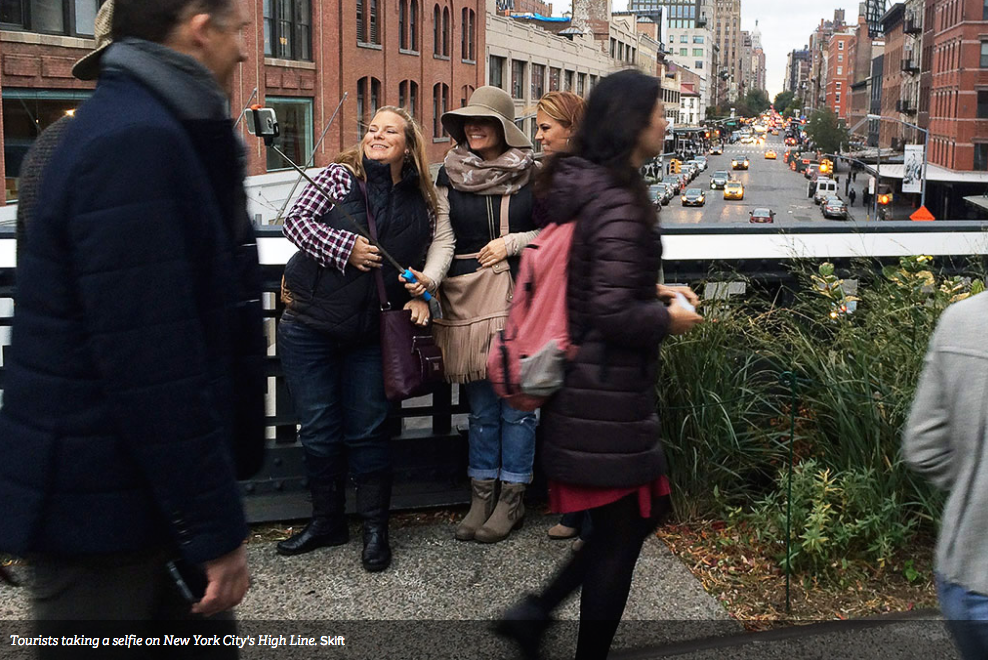Skift Podcast: Why Smart Cities Want Their Own High Line
We brought the outdoors in for a recent episode of the Skift Podcast, which explored the history of the High Line in New York City and some projects around the world that have been inspired by the popular park.
Our experts were Adrian Benepe, senior vice president and director of city park development at The Trust for Public Land, and Meg Daly, founder and president of Friends of the Underline in Miami. Daly expects construction to begin next year on The Underline, a planned 10-mile linear park and urban trail.
Here are five takeaways from the conversation:
Early expectations for the High Line were modest.
The old rail lines that became the High Line were nearly torn down a couple of decades ago.
“It was seen as an albatross, as an impediment to development, and as an eyesore,” Benepe said. But the city eventually came around, and the organization Friends of the High Line gathered support to raise money to help fund the project.
Once the High Line got the green light, Benepe said early projections called for a few hundred thousand visitors a year.
“Nobody in their wildest imagination anticipated seven and a half million,” he said, which is what the High Line drew in 2015.
Destination parks appeal to modern tourists.
Benepe said parks tap into an interest in what he calls “urban ecotourism.”
He said a quarter of the High Line’s visitors are foreign tourists, and half are from out of town.
“Young tourists, millennials, families who go to visit other cities, they’re not there to do the traditional thing,” he said. “They’re not just here to go to the Broadway play and get on the tour bus. They want to rent the bike. They want to get in a kayak. They want to go see the cool New York, and the High Line is the essence of cool New York.”
That rings true for Daly, who visits her kids in New York frequently and found inspiration for the Underline in the High Line.
“I really think if I go to a town and I can put some walking shoes on and I can find a great park, I’ve found a great city, and New York offers that,” she said.
“Rails to trails” parks are popping up all over.
In addition to the Underline, which is using some of the High Line’s designers, there are parks planned around old transportation systems all over the world.
The Trust for Public Land is working on half a dozen projects similar to the High Line, Benepe said, and there are some 60 around the world that bear resemblance to the New York City park.
Examples include The 606 in Chicago, the QueensWay in New York, and the Eastside Rail Corridor in the Seattle area.
“This is really the new frontier of urban design and urban development, looking at all of this abandoned infrastructure, the maritime infrastructure, the old piers, the wharves, the rail lines,” Benepe said.
Want a project to sound cool? Just add -line at the end of the name.
In addition to the High Line and the Underline, there’s also the Atlanta BeltLine, the underground Lowline in Manhattan and the Dryline, a nickname for a project meant to protect New York City from floodwaters.
“The ‘-line’ has become kind of like “-gate,” like Watergate led to everything-else-gate,” Benepe said. “Line has become the eponymous term for any kind of linear anything that is maybe park-like or not even park-like.”
If you build it…you still have to program it.
Daly said her organization held six public meetings to ask the public what they wanted the Underline to include in its 10 miles.
“They want two trails separated, one for bicycles, one for pedestrians. They want lighting so that it’s safe and it’s usable at night. They want water fountains and benches,” she said. “They want public art. They want butterfly gardens, dog parks, places to play, overlooks because we actually connect to water…We have skate parks, arboretums, all of this has been drawn into the master plan.”
She said the final product is intended to be “120 acres of surprising art and parks that connect to the neighboring communities.” She said the goal is to incorporate the cultural riches of those neighborhoods, including Little Havana and Coconut Grove, which have diverse populations.
Benepe said that kind of inclusion is important. The QueensWay, for example, is being designed to incorporate the art of Queens as well as the community.
“There are at least 100 different nationalities living within a mile of this,” he said. “Queens is like the polyglot melting pot of the world, so we want to celebrate those cultures.”
For the complete podcast , click here.
, click here.